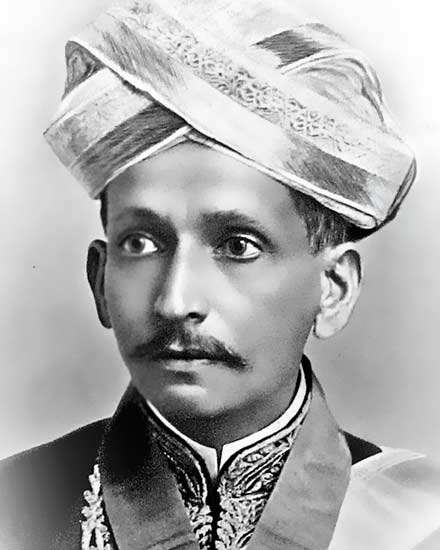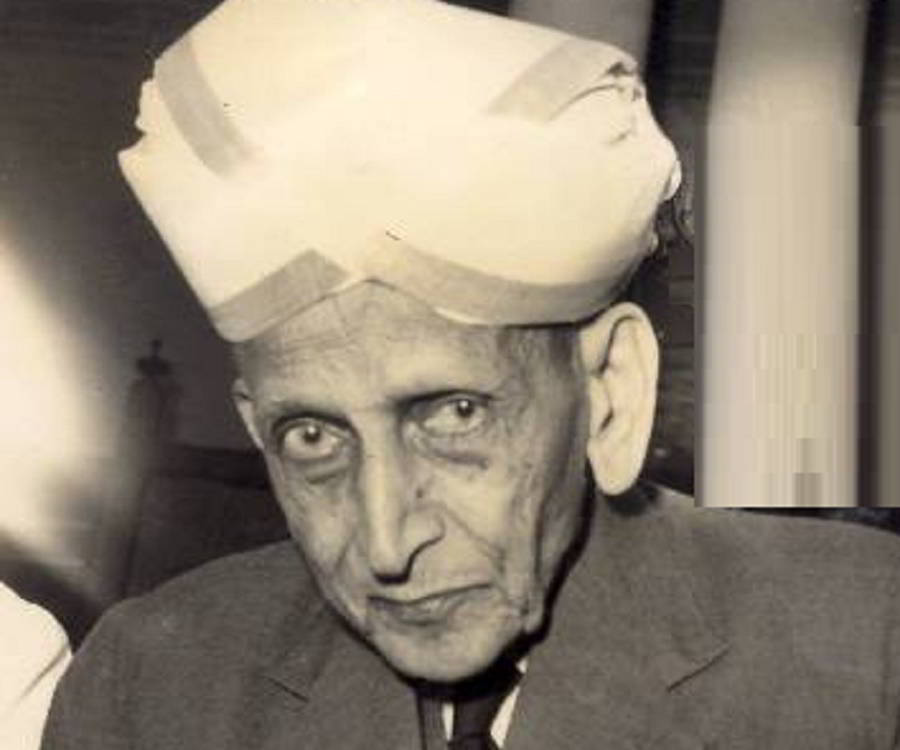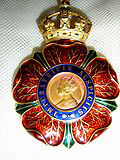

The founder, the visionary and Bharat Ratna recipient Sir M. Visvesvaraya was keen to promote what he felt was good in English society, particularly their orderly habits, punctuality, restraint in speech and social behaviour. But, the factor that motivated him more was when he was the Dewan of Mysore and had planned a visit to Bangalore Club, then known as the Bangalore United Services Club. The staff of the Club asked him to take off the Mysore turban and put on a cap if he wanted to enter the Club. This disturbed him no end and he decided to start a club that would allow Indians; as during those days, the Cantonment areas did not allow Indians inside the clubs. He then wrote a letter to the government asking for permission to start a club. Our patron, Shri Nalwadi Krishnaraja Wadiyar, who was the ruling king at the time, sanctioned seven acres, 20 guntas of land in Cubbon Park, Seshadri Road. The Century Club was thus founded in 1917 and Sir M. Visvesvaraya served as its first President.
| Born : | September 15, 1860 | Died : | April 14, 1962 Bangalore |
Occupation : Engineer, Dewan of Mysore. He was an eminent Indian Engineer and Statesman born in Muddenahalli in Chikkaballapur District of Karnataka State. Every year, 15 September is celebrated as Engineer's Day in India in his memory.
Biography
Early years

Sir M. V. was born to Srinivasa Sastry and Venkachamma at Muddenahalli village, Chikkaballapur Taluk, Kolar District of present-day Karnataka, in what was then the princely State of Mysore. His father Srinivasa Sastry was a Sanskrit scholar and an authority on the Hindu scriptures, besides being an Ayurvedic practitioner. Sir M. V.'s ancestors actually hailed from the village of Mokshagundam near Giddalur in the Prakasam District of present-day Andhra Pradesh; they had migrated to Mysore State perhaps three centuries ago. The family name, "Mokshagundam”, preserves the memory of his association with Andhra Pradesh.
The young Visvesvaraya lost his father at the age of 15. The family was residing at Kurnool of Andhra Pradesh when this calamity befell them. They moved back to Muddenahalli after that. Sir M. V. attended primary school at Chikkaballapur and high school at Bangalore. He earned his B.A. from the Madras University in 1881 and later studied civil engineering at the College of Science, Pune, now known as the College of Engineering, Pune (COEP). He was ranked first in the L.C.E. and the F.C.E. Examinations in 1883.
Career as Engineer

Upon graduating as an Engineer, Visvesvaraya took up a job with the Public Works Department (PWD) of Bombay now known as Mumbai, and was later invited to join the Indian Irrigation Commission. He implemented an extremely intricate system of irrigation in the Deccan area. He also designed and patented a system of automatic weir water floodgates which were first installed in 1903 at the Khadakvasla reservoir near Pune. These gates were employed to raise the flood supply level of storage in the reservoir to the highest level likely to be attained by its flood without causing any damage to the dam. Based on the success of these gates, the same system was installed at the Tigra dam in Gwalior and the Krishnaraja Sagar (KRS) Dam in Mysore. He was the brain behind the Krishnaraja Sagar Dam in Mysore. Visvesvaraya achieved celebrity status when he designed a flood protection system to protect the city of Hyderabad from floods. He was also instrumental in developing a system to protect Vishakapatnam Port from sea erosion.
Sir M. V. supervised the construction of the KRS Dam across the Cauvery River from concept to inauguration. This dam created the biggest reservoir in Asia at the time it was built. Sir M. V. was rightly called the "Father of modern Mysore State" (now Karnataka). During his period of service with the Government of the Mysore State, he was responsible for founding of, under the aegis of that government, the Mysore Soap Factory, the Parasitoide Laboratory, the Bhadravati Iron & Steel Works, the Sri Jayachamarajendra Polytechnic Institute, the Bangalore Agricultural University, the University of Mysore, the State Bank of Mysore, The Century Club, Mysore Chambers of Commerce and numerous other industrial ventures and public works that owe their inception or active nurturing, to him. He was instrumental in the founding of the "Government Engineering College" at Bangalore in 1917, one of the first engineering institutes in India. This institution was later named the "University Visvesvaraya College of Engineering" (UVCE) after its founder. It remains one of the most reputed institutes of engineering in Karnataka. He also encouraged private investment in industry during his tenure as Dewan of Mysore. He was known for his sincerity, time management and dedication to a cause. He was also instrumental in charting out the plan for road construction between Tirumala and Tirupati.
Some of the job positions he held were :
- Assistant Engineer, Bombay Government Service (in 1884).
- Chief Engineer, Hyderabad State (he served only for 7 months starting April 15, 1909).
- Chief Engineer in Mysore State (Nov 15, 1909). He was also Secretary to the Railways.
- President of Education and Industrial Development committees in Mysore State.
- Dewan of Mysore (for six years starting 1912).
- Chairman, Bhadravati Iron Works.
- Member of the Governing Council of the Indian Institute of Science, Bangalore.
- Member of the Governing Council of Tata Iron and Steel Company (TISCO).
- Member of Back Bay Enquiry Committee, London.
- Member of a committee constituted in 1917 to make recommendations regarding the future of Indian States.
Sir M. V. retired in 1908 and the then Maharaja of Mysore, Sri Krishnaraja Wadiyar, was eager to secure the services of Visvesvaraya to serve Mysore. Sir M. V. joined as Chief Engineer in Mysore because he wanted challenging opportunities.
Sir M. V. had earned a reputation for his honesty, integrity, ability and intelligence. He had introduced compulsory education in the State which later was embodied as a fundamental right in the Constitution of independent India.
As the Dewan of Mysore
After opting for voluntary retirement in 1908, Visvesvaraya was appointed Dewan or First Minister of the princely state of Mysore, one of the largest and most important in India. With the support of Krishnaraja Wadiyar IV, Maharaja of Mysore Visvesvaraya made an arguably unprecedented contribution as Dewan to the all-round development of the State.
Very Simple Person

He led a very simple life. He was a strict vegetarian and a teetotaller. He was known for his honesty and integrity. And a characteristic example was when before accepting the position of Dewan of Mysore, he invited all his relatives for dinner. He told them very clearly that he would accept the prestigious office on the condition that none of them would approach him for favours. Such things are unheard of these days.
Sir M. V. belongs to that small band of eminent Indians whose ideas and achievements have been among the truly creative and formative forces of modern India. Sir M. V.'s slogan was “Industrialize or Perish”. In 1921, Gandhi launched his non-cooperation movement which Sir M. V. did not agree with. Sir M. V. wrote to Gandhi urging him to be dressed better in view of the upcoming Round Table Conference. Sir M. V. used to be immaculately dressed.
He once said: “Remember, your work may be only to sweep a railway crossing, but it is your duty to keep it so clean that no other crossing in the world is as clean as yours.”
Honours
Sir M. V. was never interested in fame or publicity. But they came to him on their own. Every university in India sought him out to confer honoris causa, which included the universities of Allahabad, Andhra, Bombay, Calcutta, Jadhavpur, Mysore, Patna and Varanasi.

The Knight Commander of
The Indian Empire medal
He was awarded with many honours during his lifetime. These include the "Kaisar-i-Hind" award in 1906 and the C.I.E. (Companion of the Indian Empire) in 1911. While he was the Dewan of Mysore, Visvesvaraya was made Knight Commander of the Order of the Indian Empire by the British. After India attained independence, this great statesman was awarded the nation's highest honour, Bharat Ratna (Gem of India) in 1955 for his service to the nation.

The Bharat Ratna medal
Sir M. V. was honoured with honorary membership of the international Institution of Civil Engineers (based in London) and a fellowship of the Indian Institute of Science (based in Bangalore). He was also awarded several honorary doctoral degrees like D.Sc., LL.D., D.Litt. from various universities in India. He was President of the 1923 Session of the Indian Science Congress.
The centenary of the birth of Sir M. V. was celebrated in Lal Bagh in Bangalore. Prime Minister Nehru flew down to Bangalore by a special plane to honour the greatest son of India. Sri Jayachamaraja Wadiyar presided over the function.
To name few of the many things he was responsible for :
- Architect of the Krishnarajasagara Dam (or KRS Dam or Brindavan Gardens) – one of the biggest dams in India which irrigates a hundred and twenty thousand acres of land. This was built at a cost of Rs 2.5 crore. It changed a barren Mandya district into rice granary, providing drinking water to Mysore and Bangalore.
- Bhadravati Iron and Steel Works – as its Chairman, he rescued it from becoming extinct.
- Mysore Sandal Oil Factory and the Mysore Soap factory.
- Mysore University – Sir M.V.’s question was “If Australia and Canada could have universities of their own for less than a million population, cannot Mysore with a population of not less than 60 lakhs have a University of its own?”
- State Bank of Mysore (it was first named The Bank of Mysore).
- Public libraries in Mysore and Bangalore.
- Encouraging girls to attend school.
- Mysore Chamber of Commerce.
- Kannada Sahitya Parishad or the Kannada Literary Academy.
- Sri Jayachamarajendra Occupational Institute, Bangalore – funded entirely from the money he earned for rescuing Bhadravati Iron Works.
- In 1912, he set up Hebbal Agricultural School, now University of Agricultural Sciences.
- In 1903, he designed automatic, weir water floodgates, installed at Khadakvasla reservoir.
- He implemented the irrigation system in Karnataka.
Some of the honours and laurels conferred on Sir M. V. :
- 1904 Honorary Membership of London Institution of Civil Engineers for an unbroken period of 50 years.
- 1906 “Kaisar-i-Hind” in recognition of his services.
- 1911 C.I.E. (Companion of the Indian Empire) at the Delhi Durbar.
- 1915 K.C.I.E. (Knight Commander of the Order of the Indian Empire).
- 1921 D. Sc. – Calcutta University.
- 1931 LLD – Bombay University.
- 1937 D. Litt. – Benaras Hindu University.
- 1943 Elected as an Honorary Life Member of the Institution of Engineers (India).
- 1944 D. Sc. – Allahabad University.
- 1948 Doctorate – L.L.D., Mysore University.
- 1953 D. Litt. – Andhra University.
- 1953 Awarded the Honorary Fellowship of the Institute of Town Planners, India.
- 1955 Conferred ‘Bharat Ratna‘ (The gem of India), the highest distinction of the country.
- 1958 D.Sc. Jadhavpur University Calcutta.
- 1958 ‘Durga Prasad Khaitan Memorial Gold Medal’ by the Royal Asiatic Society Council of Bengal.
- 1959 Fellowship of the Indian Institute of Science, Bangalore.
Institutions in his honour
- The Visvesvaraya Technological University, Belgaum, to which nearly all engineering colleges in Karnataka are now affiliated.
- The University Visvesvaraya College of Engineering, Bangalore popularly known as UVCE, is an engineering college affiliated to the Bangalore University established in the year 1917 by Bharat Ratna Sir M. Visvesvaraya. The college was renamed University Visvesvaraya College of Engineering from its earlier name University College of Engineering, Bangalore in honour of its illustrious founder, Sir. M Visvesvaraya.
- Visvesvaraya Polytechnic College, Almala Taluk, Ausa District, Latur, Maharashtra State.
- Shri Visvesvaraya Shikshan Prasarak Mandal, Almala Taluk, Ausa District, Latur, Maharashtra State.
- Sir M. Visvesvaraya Institute of Technology (popularly known as Sir M.V.I.T.), Bangalore, is named after Sir M. V.
- Visvesvaraya National Institute of Technology (V.N.I.T.), Nagpur (formerly Visvesvaraya Regional College of Engineering) was established in the early 1960s in his honour. The college is among the elite 17 National Institutes of Technology (formerly Regional Engineering Colleges) in India.
- The Visvesvaraya Industrial & Technological Museum, Bangalore, set up as part of his birth centenary celebrations.
- Visvesvaraya Iron & Steel Limited, a public sector undertaking, in the founding of which he was instrumental
- His alma mater, the College of Engineering, Pune (COEP) has erected a statue in his memory and honour on their campus in central Pune, immediately outside the historic COEP administration building.
- Karnataka Industrial Cooperative Bank Ltd.
